Is bamboo really more eco-friendly?
- Melissa Willis
- Sep 10, 2021
- 5 min read
From toothbrushes, kitchen utensils, plates, coffee cups, straws, clothing, flooring, furniture, napkins, linen, mattresses ...(and the list goes on). Bamboo is the new renewable eco-crop making its mark, but is it more “eco-trendy” than “eco-friendly”?

What is so great about bamboo?
Bamboo is 100% biodegradable
It regenerates easily can be easily which is why it has become a popular raw material from companies and brands wanting the eco-friendly offering.
Bamboo products are eco-friendly as long as they haven't been chemically processed.
Most raw materials are treated in some way with chemicals, so it’s important to understand how often you want to use the product.
Naturally resistant
Wild bamboo is naturally pest resistant and contains antibacterial and anti-fungal properties, so manufacturers don’t need to add unnecessary pesticides and chemicals to harvest their crops.
It uses very little water to grow and flourishes without herbicides.
Bamboo grows quickly
Bamboo is the fastest growing plant on the planet! It reaches adult size in 1-5 years (depending on its variety), compared to trees which take on average 30 years to fully grow.
Bamboo purifies air
Bamboo forests have enormous positive benefits for the environment.
Bamboo absorbs 2x more carbon dioxide than trees, which is why they are known to act as carbon sinks. It also generates a vast amount of oxygen, totalling up to 30% more than most plants and trees.
Bamboo is strong
Lightweight yet strong and makes for a more sustained alternative to wood and steel construction components.
Known to be even stronger than steel, the tensile strength of bamboo is 28,000 PSI (versus the tensile strength of steel is 23,000 PSI).[i]
Bamboo reduces soil erosion
Once bamboo is harvested, the shallow roots can remain in the ground for the new plant to grow, leaving the micro-environment beneath the surface undisturbed.
Bamboo decomposes quickly
Bamboo takes 3 years to fully decompose when fully submerged under soil! This is incomparable to the decomposition rate of plastic (500 years).
The downside to bamboo
Bamboo is farmed as a monoculture
A monoculture removes all other varieties of plants and crops from the harvest, disrupting the current ecosystem and biodiversity. Monocultures create problems for organisms who rely on a diverse ecosystem for nutrition and habitat.
This is the same farming technique used for avocado plantations, forests of eucalyptus trees, and plains of corn and soya - minus the plethora of herbicides and pesticides used on those crops.
The majority of global bamboo is grown in China
Little agricultural and environmental practices are in place. So we don’t know if chemicals are actually being used to accelerate growth and production.
The carbon footprint may be high
Since China is the predominant exporter, the distribution of these crops across the globe can increase its carbon footprint.
High demand needs space
As the demand for bamboo as a raw material rises, so does the demolition of natural forests.
Chemical addition
This is where the organic label helps distinguish what’s free from chemicals and toxins. The GOTS (Global Organic Textile Standard) monitors our textile industry, and it has not been given to bamboo products for the following reasons:
turning bamboo into fabric requires an intensive chemical process
production involves treating the bamboo yarn with dyes, bleaches or formaldehyde. This is how rayon is produced.
Bamboo clothing has been marketed as a more environmentally friendly fashion option, but most of that clothing has historically been made from viscose rayon.
“Throughout most of the 20th century, viscose rayon manufacturing was inextricably linked to widespread, severe and often lethal illness among those employed in making it,” Paul D Blanc, from his 2016 book titled Fake Silk: The Lethal History of Viscose Rayon.
Greenwashing
In December 2015, the Federal Trade Commission (FTC) fined Nordstrom, Bed Bath & Beyond, Backcountry, and J.C. Penney for mislabelling textile goods made of viscose rayon as “bamboo”.

Clothing made of fabric containing anything other than pure bamboo linen is required to use the term “rayon” or “rayon made from bamboo” on the label.
Photo courtesy Au Naturel Origins
When considering bamboo as an alternative, consider the following factors:
How often do you need to purchase this product?
How far away are you from the source?
Is the item melamine-free (melamine has been linked with leaking toxic chemicals into food)?
Have chemicals been used to treat this item?
Is there a more sustainable alternative?
For any brand looking to make a positive environmental impact, switching to a more sustainable raw material is one of the first steps. Different countries have different regulations around how products are labelled and so understanding the loopholes manufacturers can use to market a product to their advantage, gives the consumer a clearer understanding of what they are actually buying.
Clothing
Whilst most bamboo clothing or textiles require some form of chemical process, the most sustainable clothing approach by far is to thrift or repurpose existing items. Fast fashion is growing global concern as researchers report microplastics from fashion could be even more damaging than plastics from the food or packaging industry.[ii]
Toilet Paper
Most toilet paper is made from virgin softwood (trees that take 30 years to grow). The average American uses 141 rolls per year[iii], mostly derived from Canada’s boreal forest. It is also bleached with chlorine to make it softer and whiter.
A tree-free option like bamboo is quickly becoming popular as it grows so quickly.
The Natural Resources Defense Council (NRDC)[iv] says recycled toilet paper currently has the lowest environmental impact, as this process requires less water and energy and creates less air and water pollution than traditional toilet paper. However, a large portion of post-consumer recycled product has a thermal coating (BPA), which is very misleading when a consumer is trying to make a conscious choice.
When paper contains BPA and is flushed down the toilet, it can disrupt the reproductive systems of aquatic wildlife and alters the longevity of ecosystems forever.
Branding to look out for: 100% virgin bamboo pulp BPA free 100% sustainable 100% biodegradable
Toilet paper brands with the least environmental impact:
Who gives a crap - (contains an impressive 95% post-consumer recycled product)
Cheeky Panda
Greencane
Green Forest
Whole Foods Market's 365 Everyday Value
Royal Paper's Earth First
Bambooloo
Noo Trees
Tableware
The Ocean Conservancy lists plastic cutlery as one of the most deadly types of plastic pollution for sea-life.[v]
Bamboo makes for an ideal alternative as it is more renewable ; less harmful impact ecosystems and wildlife and 100% biodegradable.
Plastic lasts forever, so it will always be the worst single-use option.
Furniture
Bamboo grows much faster than trees and requires less water. It is also much stronger than we think (like steel-strong!) and worth considering over laminated furniture from Ikea!
More here on various furniture “wood” options: https://furnishingtips.com
Easy switches you can make today!
Final thoughts
Many brands that make these “eco-friendly” refinements are still lagging behind with their packaging.
A truly conscious brand has considered the entire process from source to discarding, and when you decide to switch to a new brand (particularly one that you will use frequently like toilet paper), consider the entire process.
Sources
[i] https://www.ecoandbeyond.co/articles/is-bamboo-sustainable/
[ii] https://www.undp.org/blogs/six-things-you-didnt-know-about-true-cost-fast-fashion?utm_source=EN&utm_medium=GSR&utm_content=US_UNDP_PaidSearch_Brand_English&utm_campaign=CENTRAL&c_src=CENTRAL&c_src2=GSR&gclid=CjwKCAjwvuGJBhB1EiwACU1AiU8ERSa4ped9JqkATyTDPJkmDn37_vxnbfl_Zfgxo-Iy64y5GU9k2hoCheYQAvD_BwE
[iii] https://www.treehugger.com/eco-friendly-toilet-paper-bamboo-vs-recycled-5114452
[iv] https://www.treehugger.com/eco-friendly-toilet-paper-bamboo-vs-recycled-5114452
[v] [v]https://www.northcore-europe.com/northcore-blog/bamboo-cutlery-vs-plastic.html

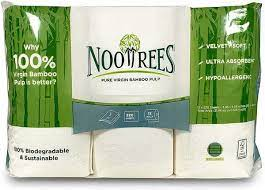
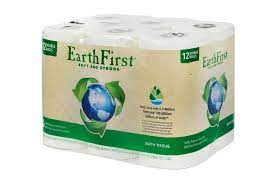
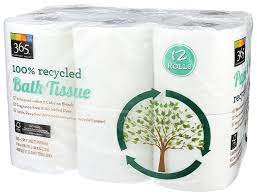
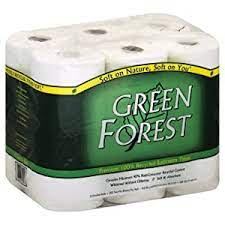
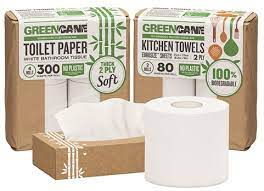



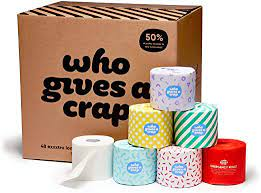
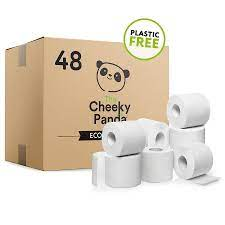









Comments